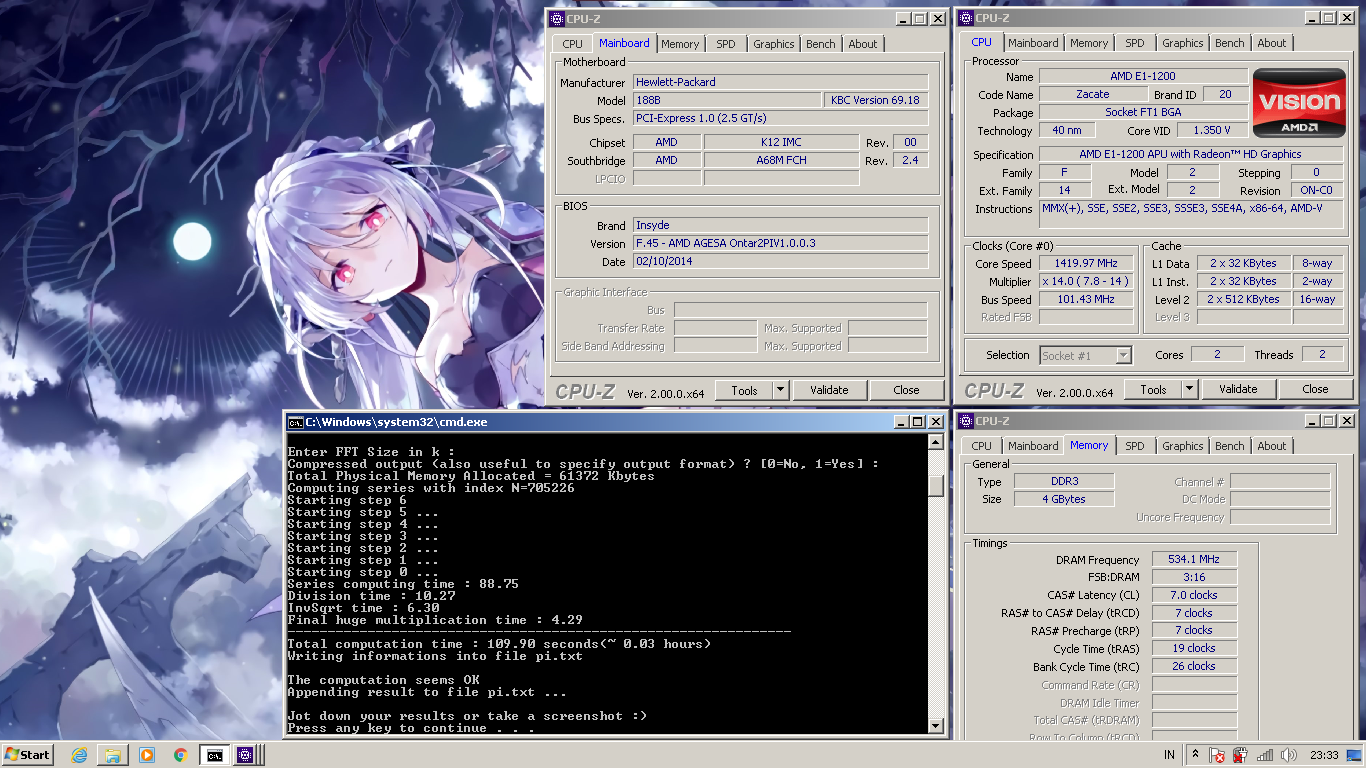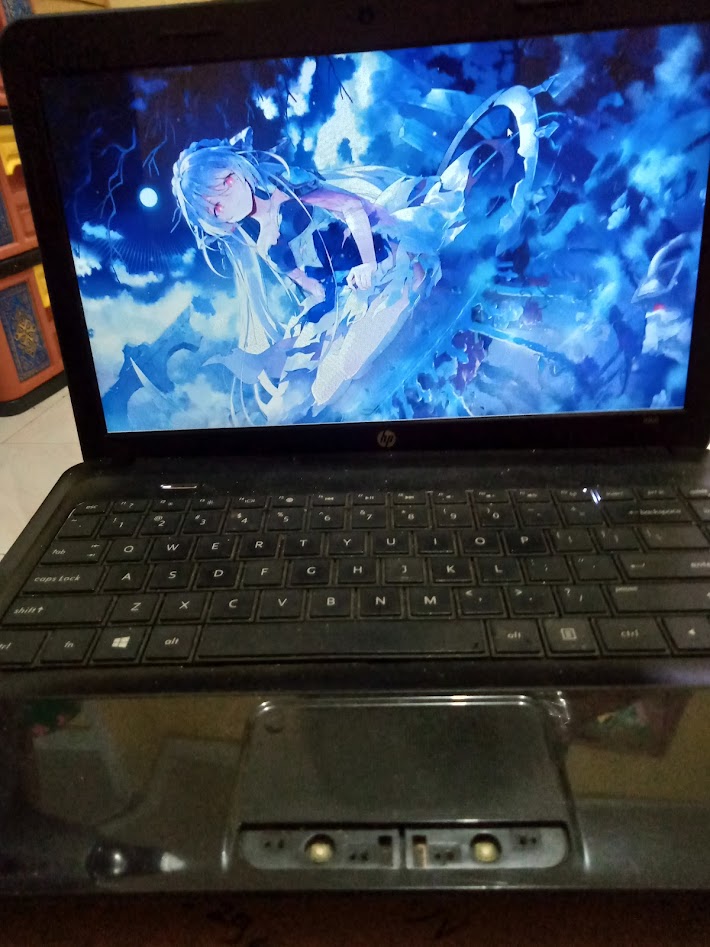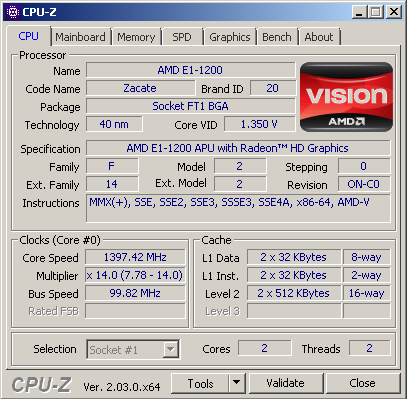PiFast score 1min 49sec 900ms with a E1-1200
Thursday, 01 January 1970 07:00 | Update at null
Media Gallery
Screenshot

Device, Setup, etc



URL
https://hwbot.org/submission/4955475https://www.facebook.com/hakimnu.id/posts/3265977126968261
Information Detail
Hardware: AMD E1-1200
Specs:CPUID : AMD E1-1200 APU with Radeon(TM) HD Graphics
Architecture : x86
Codename : Zacate
L3 Cache : -
Clock : 1.4GHz
Core/Thread : 2/2
TDP : 18W
Technology : 40nm
Socket : FT1 BGA 413-Ball
IGPU : AMD Radeon HD 7310
See more specification...
Software: PiFast
Score: 1min 49sec 900ms
About: PiFastPiFast is a classic benchmark application designed to measure processor performance in performing intensive mathematical calculations, particularly in calculating the value of pi (π) to millions of digits. This benchmark is renowned for being lightweight, fast to run, and highly accurate in reflecting the capabilities of single-thread CPUs, making it a popular choice among overclockers and system performance testers since the early days of processors.
In PiFast testing, the system is tasked with calculating the value of pi using a fast algorithm based on high-precision mathematics. The faster the time achieved, the higher the performance of the tested CPU. Since PiFast runs on a single core (single thread), this benchmark is highly relevant for measuring the efficiency of a single core in both modern and older processors.
Features and Advantages of PiFast:
- Very lightweight and does not require installation.
- Ideal for testing system stability after overclocking.
- Focuses on single-thread performance, an important indicator in gaming and lightweight application performance.
- Provides test results in seconds, suitable for quick and repetitive testing.
- Compatible with various Windows versions, including older systems.
Although it is quite outdated compared to modern benchmarks, PiFast is still used today as a simple and effective testing tool, especially among the overclocking community and hardware enthusiasts who want to validate performance without running heavy benchmarks.
Released in 2012 as part of the Brazos 2.0 family, the AMD E1-1200 is a power-efficient processor aimed at entry-level laptops. It has a 2 core and 2 thread configuration with a fixed clock speed of 1.4 GHz, with no support for Turbo Core technology. Built with a 40nm fabrication process, the E1-1200 has a TDP value of 18 watts-efficient enough for portable devices that emphasize low power consumption and longer battery life. Despite its limited performance, the E1-1200 was a popular choice in its day thanks to its affordable price and ability to handle light computing needs.
One of the main advantages of the AMD E1-1200 is the integrated Radeon HD 7310 GPU, which offers better graphics performance than Intel's entry-level graphics solutions at the time. This GPU has the ability to play HD resolution videos smoothly, as well as run light games such as Counter Strike 1.6, Plants vs Zombies, or other casual games with minimum graphics settings. That said, this combination of CPU and GPU is not intended for heavy-duty work such as video editing, 3D rendering, or modern gaming. Overall performance is more optimal when used for tasks such as browsing, streaming videos, accessing social media, typing documents, as well as basic office applications.
However, it should be noted that the AMD E1-1200 is less suitable for heavy multitasking, especially in modern operating systems like Windows 10. With a low clock speed and no Boost feature, users may experience lag or limitations when opening multiple applications at once. In tests using the HP 1000 1b05au laptop, this processor was paired with 4GB DDR3 single channel RAM (2 DIMM slots) and tested on Windows 7, Windows 8, and Windows 10 operating systems. The results show that the most optimal performance is achieved on Windows 7 or Windows 8, while in Windows 10 the system tends to be slow although it can still be used for basic needs. As such, the AMD E1-1200 can still be relied upon as a power-efficient and inexpensive solution for users with very light computing needs.
Hardware Detail:
Device: HP 1000 1b05au
RAM: 4GB DDR3 Single Channel 2 DIMM
OS: Windows 7, Windows 8, Windows 10
* Not Avaiable
